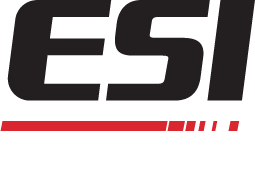Is EB Curing safe for Food Packaging?
Yes. EB cured inks and OPV’s meet European standards, such as the Swiss Ordinance, have ultra-low migration and extractables, and are EUPIA and FDA compliant.
EB inks and coatings contain NO Photoinitiators. In addition, due to the electrons, they have a higher crosslink density than UV. As a result, they have the lowest odor and extractables limit of any energy curable ink or coating.
EB inks and coatings have been employed in food packaging for years. Electron Beam-cured inks are not only safe but present clear performance advantages when used in printing on food packaging.
How will using EB save me money?
Electron beam (EB) offers the lowest total cost solution for many different applications, including food packaging printing. In 2000, ESI introduced breakthrough innovations which significantly reduced both the size and upfront capital cost of ebeam. Whether it’s upfront costs, ongoing ink, coating, or adhesive cost, operating and maintenance costs, or waste reduction, EB is the lowest total cost solution for printers and converters worldwide.
Will I need to use a Chill Roll?
The answer to this question depends on several factors. ESI has the industry’s most extensive standard product lineup and largest library of custom-designed units and components, both with and without chill rolls. Factors include the material type and thickness, width, and speed. But other factors like application and dose required all factor into whether or not we recommend a chill roll (or drum).
Ultimately, in most cases, a chill roll adds upfront cost and complexity to the system. And where it can be avoided, ESI will make the recommendation so the customer can save money without sacrificing any product or process quality.
Can I print wet on wet?
Yes, web offset printing is a wet on wet printing process. ESI has EB machines designed for both inline offset presses and the Comexi CI-8 press, which prints around a central impression drum.
Also, there are more and more ink companies offering flexo inks which can be printed wet-on-wet and cured with one electron beam dryer at the end of the press.
Can I lower the coat weight without affecting performance?
In most cases, yes. Typically, to get certain physical properties, companies will use a certain applied wet coat weight, which when dried, results in a finished dry coat weight. EB coatings are 100 percent solids and the wet applied coat weight is equal to the dry finished coat weight. But due to the highly crosslinked nature of the coating, even the EB dry coat weight can be reduced over the conventional dry coat weight. All without sacrificing physical properties or performance.
Testing will be necessary to determine if a lower coat weight will affect performance. ESI has pilot lines around the world which are able to provide proof of principal as well as scale up and toll work.
Is EB safe for my workers?
Yes. EB technology is the safest drying and curing technology available as it adds no heat to the web, it has no moving parts, and there is no light involved that requires shielding. EB has been around for many years for various applications, specifically food packaging applications.
Are the inks really that easy to clean up?
The inks are 100 percent solid technology and they do not dry and can be left in the pan. In a typical printing application, at the end of the run, EB can be left in the pan overnight or over a weekend and nothing will dry them except an electron beam. The inks don’t harden, and their viscosity doesn’t change, as a result the inks do not require an extensive clean up. Standard solvent systems, alcohols, and IPA can be used to easily and safely clean up most of these inks and coatings.
Do I need solvent recovery with EB?
No. EB inks and coatings are 100 percent solids technology, which means there are no solvents. Because there is no water or hydrocarbon solvents, what gets put on the web stays on the web. There are no exhaust fumes or exhaust coming out of the factory that needs to be cleaned up or destroyed.
Can I run 2000 feet per minute?
EB is designed to run very fast and wide. Speeds up to 3000 feet per minute are possible and are being executed commercially around the world. Most electron beam systems are used to cure at about 400 meters per minute at a dose of about 3 megarads.



